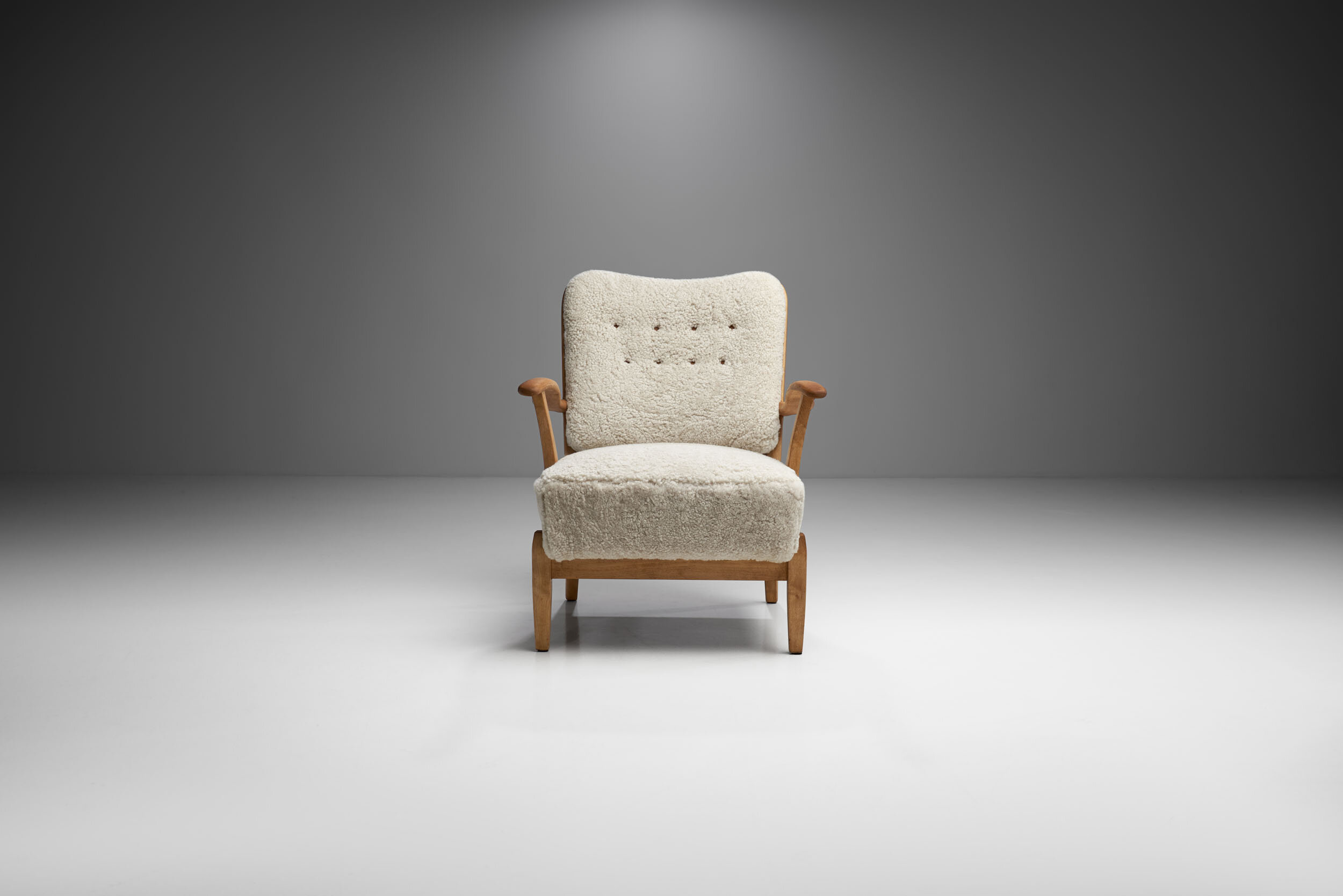Axel Larsson (attr.) Swedish Modern Armchair for Svenska Möbelfabrikerna Bodafors, Sweden 1940s (sold)

































Axel Larsson (attr.) Swedish Modern Armchair for Svenska Möbelfabrikerna Bodafors, Sweden 1940s (sold)
Axel Larsson was an incredibly productive Swedish furniture architect and designer with a more than 50-year long career. This armchair is a rarity, despite Larsson being most well-known for his furniture series designed for and mass-produced by SMF Bodafors.
The furniture that was manufactured at Svenska Möbelfabrikerna in Bodafors is of fine quality and was made in large numbers, however, Axel Larsson also designed furniture for individual carpenters in Stockholm. These were made in small numbers and are very unusual, and this armchair may be one of these designs. The exciting design of the birch structure immediately stands out for its unusual details, such as the framed back cushion and the seat’s connection to the arms. There is a clear emphasis on comfort, from the tilted back to the sculpted, wide armrests. The extremely soft sheepskin adheres to the lines of the seat and back, creating a crisp and sleek appearance. The beech wood frames the upholstery in an equally neat way, with visible screws in the back. Swedish Modern style is delicately scaled, using tapering legs and clever but simple solutions as seen on this chair as well. The back legs have a beautiful curve created by the back rest’s line, and horizontal stretchers that connect them to the front legs. The armrests grasp the seat and stretchers with a sculpted “hand”.
Swedish Modern, subtitled “A Movement Towards Sanity in Design”, was actually coined by a critic at the 1939 Fair to describe Sweden's interior display. It also describes quality and the ability to lend grace to the daily chores of life. At the same time, Swedish Modern is not an original style created in the last couple of decades, rather it is an inheritance coming from a rich tradition of beauty loving people who were courageous enough to break away from the swaddling clothes of the past to entertain new forms for living.
SOLD
Condition:
In good vintage condition. Wear consistent with age and use. The wood has some marks and discolouration. The chair has been reupholstered recently in premium sheepskin.
Dimensions:
27.16 in W x 32.48 in D x 32.28 in H; Seat height 14.76 in
69 cm W x 82.5 cm D x 82 cm H; Seat height 37.5 cm
About the Designer:
Axel Larsson was born in 1898 in Torp socken, Sweden. Larsson was a professional for more than 50 years and belonged to a handful of furniture and interior designers who played a major role and influenced the development of their professional sphere.
He grew up in Medelpad, and as a young carpenter's apprentice, he was given the opportunity to study further in Stockholm as a furniture designer through a scholarship from 1916 to 1920. In parallel with his studies at the Higher School of Art and Design, he was a furniture designer under Carl Malmsten during his work with furniture for Stockholm City Hall. During the 1920s, he made study trips to Europe, including the Paris Exhibition of 1925. Larsson started his own business in 1956, but continued working for the Swedish furniture factories in Bodafors. At this time, he also designed furniture for other companies, such as Balzar Beskow AB.
Larsson was an old-fashioned person in the sense that he did not strive to be seen himself. He was employed for 30 years at Svenska Möbelfabrikerna in Bodafors, which was seldom interested in marketing the individual designer but rather the company. When Larsson collaborated with building architects, the situation was the same. Likewise, his philosophy was that the expediency of a piece of furniture was essential, not a startling form. Even though he was not a pure-minded functionalist, the function was always in focus for his furniture and interior design. Furniture from his first major furniture series was shown at the Stockholm Exhibition in 1930. He created a high number of pieces of furniture and many significant furnishings for public premises. His major projects included Gothenburg Concert Hall, Park Avenue Hotel in Gothenburg and Folksamhuset at Skanstull in Stockholm.
A large part of his sketches and drawings are preserved in the Design Archive at Pukeberg glassworks, and he is represented at, among others, the National Museum in Stockholm and the Röhsska Museum in Gothenburg. ~H.










